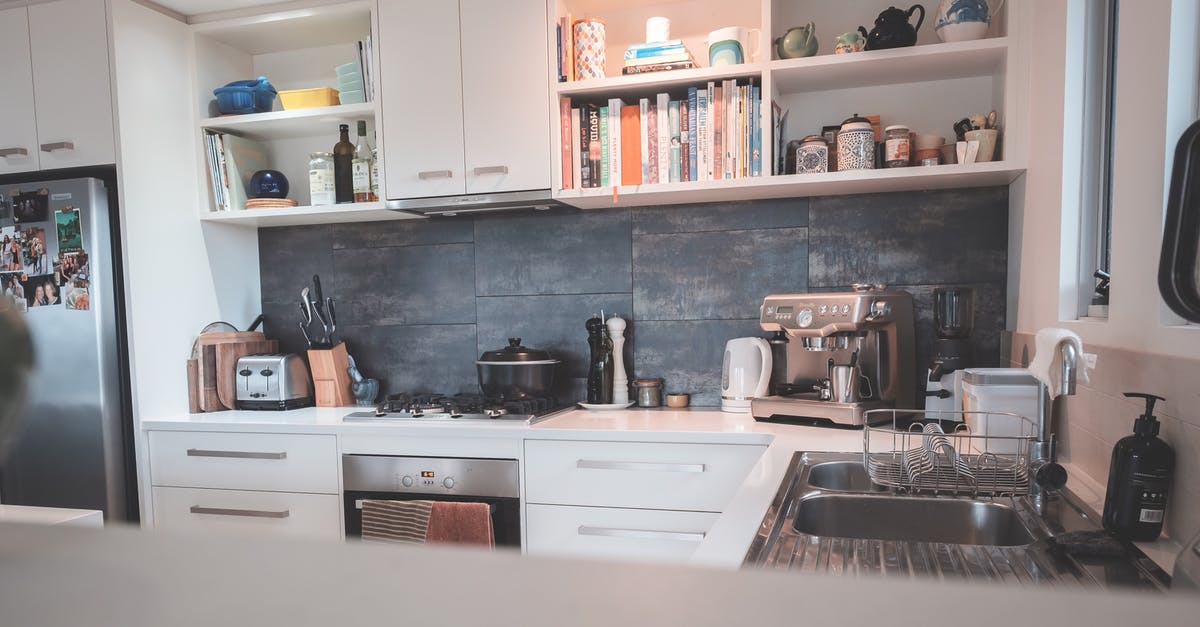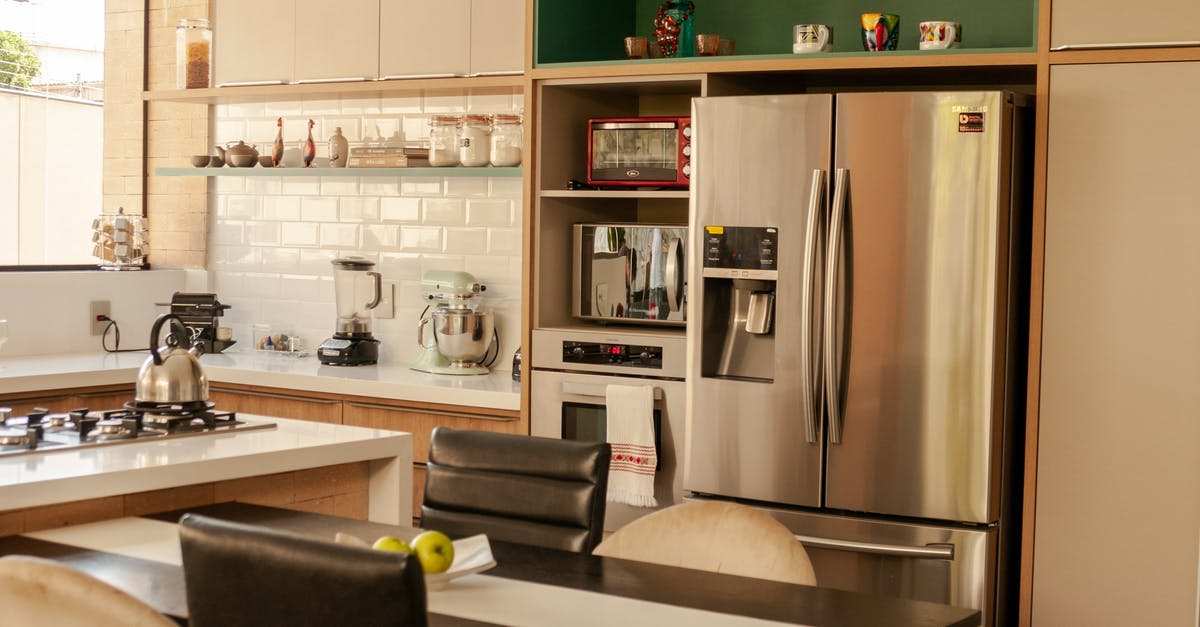Any cheap ways to clean restaurant stainless steel fridge?

so I know they have antibacterial solution to clean, but what can I say its expensive. Currently we use water+soap solution but its not working well. I am looking to clean the inside of fridge/freezer.
Update from comments: I'm looking to mainly clean, mold around the rubbers of the fridge.
Best Answer
If this is a commercial institution, you are going to have to comply with your local codes. Many will require using a certified sanitizing solution, a diluted bleach solution, or similar after cleaning.
In particular in the US, I was unable to find any direct requirements in the USDA Model Food Code, and I don't recall any from 25 years ago when I received health inspector training in one jurisdiction. That doesn't mean there are not such requirements in any given location, even if in the US.
Assuming your location permits, normally you would clean the refrigerator with a mild solution of dish soap, as you have been doing. With thick gloves, very hot water will help make the cleaning more effective. Floors, walls, and so on in a walk in would be cleaned with a solution of your general purpose detergent (back when I was in commercial service, we actually used unscented Tide, which is a very effective cleaner).
If it is possible to empty the refrigerator and turn it off for cleaning (which is not always practical in commercial environments), this doing a thorough job, and makes it easier to clean with hot water.
Update regarding moldy gaskets:
Per JES Restaurant Equipment (emphasis added):
Upon visual inspection you may find that mold or mildew is building up on the gasket which is pretty gross and bad for the gasket. The mold and mildew may seam harmless but over time it will deteriorate the gasket, basically the mold and mildew will eat away at the seal. You can combat this with a simple bleach and water solution, dilute a little Clorox in some water and use a soft cloth or sponge to apply the solution to the moldy gasket. You will notice it start to fade away, once you have cleaned the gasket thoroughly discard the “bleach water”, get some clean water and a fresh clothe and wipe the gasket down again to remove any remaining mildew and bleach solution.
In addition to being unsightly, mold on your refrigerator is almost certainly a code violation that could have drastic consequences.
Your gaskets are also probably fully replaceable, but since you are concerned with cost, this may not be your preferred option. Still, if you can, temporarily removing the gasket may facilitate cleaning it thoroughly.
Pictures about "Any cheap ways to clean restaurant stainless steel fridge?"



Quick Answer about "Any cheap ways to clean restaurant stainless steel fridge?"
- Dish Soap & Baby or Mineral Oil. First, you need to understand the direction of the grain. ...
- White Vinegar & Olive Oil. ...
- Club Soda. ...
- WD-40. ...
- Lemon Oil Furniture Polish. ...
- Glass Cleaner for Fingerprints. ...
- Bon Ami, Flour Sack & Wax Paper. ...
- Flour.
What is the cheapest and easiest way to clean stainless steel?
Option 1: Dip a soft microfiber cloth in a mixture of warm water and mild dish detergent. Use a detergent with degreasing properties. Wipe the surface along the grain of the metal and wipe dry with a separate dishcloth to prevent any water spots.How can I make my stainless steel fridge look new again?
Simple dish soap can also work to clean your stainless-steel appliances.How do I get stains off my stainless steel refrigerator?
Stainless Steel Cleaning TipsWhat is the best thing to clean a stainless steel refrigerator with?
Dish Soap: Mix 1 teaspoon of dish detergent and 1 quart hot tap water. Dip a microfiber cloth into the solution and rub the marks in small sections, going with the metal's grain. Rinse with clean hot water only, and dry immediately with a clean cloth.How to Clean Stainless Steel Appliances (Easy Kitchen Cleaning Ideas That Save Time) Clean My Space
More answers regarding any cheap ways to clean restaurant stainless steel fridge?
Answer 2
HVAC/R tech here, who does a lot of hot and cold side restaurant work.If you are trying to clean mold/mildew from around the gaskets, what I have always used is about a 10% bleach/90% water solution and a scrub brush (not metal bristles). Just spray it down, scrub it away and then rinse with clean water before sanitizing. Commercial gaskets are pressed into place, not glued, so there is not a big danger of messing the gaskets up.
Answer 3
You need to check your local regs. Moldy gaskets in a restaurant fridge unit can be catastrophic. If they are press-ins, strip them off, clean the stainless with a brush and hot water and detergent followed by wipedown with rubbing alcohol, then potassium sorbate in solution. Wash/scrub the gaskets in hot water and detergent with a rinse in a peroxide bleach followed by potassium sorbate; dry, and refit.
Answer 4
Another method of cleaning a commercial fridge is to use a bicarbonate solution (5g baking soda/1l water). It's effective at killing germs and it doesn't stain. It will leave a white residue if you do not rinse with water afterwards.
As others have suggested, you can take the gasket out and clean that in a sanitize solution as described here, one teaspoon of bleach per gallon (3.78l) of water.
Answer 5
From the site http://www.wikihow.com/Clean-a-Refrigerator
Wipe the refrigerator inside and outside with a cloth and vinegar and water or baking soda and water solution, rinsing well with a washcloth rinsed clear with water. Soapy water works, too. Clean rubber door closure area too.
Also, from http://housekeeping.about.com/od/ideasbysurface/qt/stainsteeldonts.htm
- Do not use abrasive cleaners that will scratch the surface.
- Do not use cleaners containing chlorine. Stay away from the bleach when you clean stainless steel......
Try using weak - ammonia solution: http://www.wikihow.com/Clean-Stainless-Steel
This might help: http://answers.yahoo.com/question/index?qid=20081212151544AA8OmEB It says about the finish on stainless steel and how to get rid of specific stains.
Sources: Stack Exchange - This article follows the attribution requirements of Stack Exchange and is licensed under CC BY-SA 3.0.
Images: Lachlan Ross, Dayvison de Oliveira Silva, Alexander Zvir, Dayvison de Oliveira Silva
